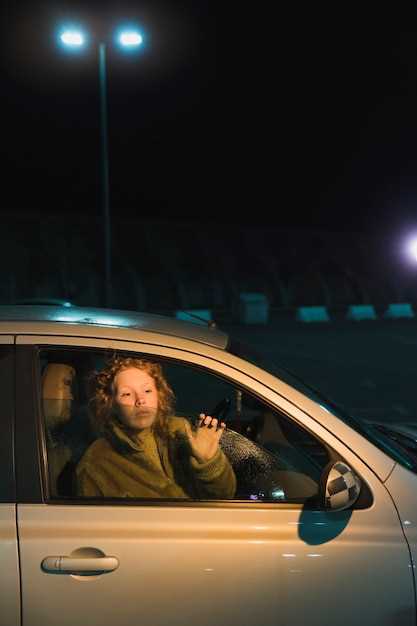
Driving at night presents unique challenges that can significantly affect safety on the road. Reduced visibility, increased fatigue, and a higher likelihood of encountering intoxicated drivers all contribute to the dangers of nighttime travel. To navigate these risks effectively, it is essential for drivers to adopt specific strategies that enhance their safety during night driving.
One of the most critical factors in nighttime driving is visibility. Streetlights, passing headlights, and other illumination sources can create harsh contrasts that make it difficult to see pedestrians, cyclists, and road signs clearly. In this context, maintaining a clean windshield and using appropriate headlights becomes crucial. Ensuring that your vehicle’s lighting system is functioning properly and adjusting your headlights to the correct settings can greatly improve your visibility and reaction time.
Another aspect to consider is the impact of fatigue on driving performance. As the body’s natural circadian rhythms promote sleepiness at night, staying alert while driving can be a challenge. Taking regular breaks, especially on long trips, and avoiding driving during your regular sleep hours can help mitigate this risk. Additionally, being aware of your own limits and recognizing signs of drowsiness is vital for ensuring your safety and that of others on the road.
Finally, staying vigilant for other road users is essential. Nighttime driving often sees an uptick in pedestrian and cyclist activity, and their visibility can be compromised. Paying close attention to your surroundings and adjusting your speed accordingly can prevent accidents and keep the roads safer for everyone. By being proactive and informed, drivers can navigate the challenges of nighttime driving more safely and confidently.
Adjust Your Headlights for Optimal Visibility

Properly adjusted headlights are crucial for safe nighttime driving. Misaligned headlights can cause glare for oncoming drivers and reduce your visibility of the road ahead. Begin by ensuring your headlights are clean and free from dirt or debris, as this can significantly impact their brightness.
To adjust your headlights, park your vehicle on a level surface about 25 feet away from a wall or garage door. Turn on your headlights and mark the horizontal and vertical centerlines of the beam on the wall. Many vehicles have guidelines in the owner’s manual for specific adjustment procedures, so refer to it for precise instructions.
Using a screwdriver or a wrench, adjust the screws on your headlight assembly to align the beams with the marked lines. The top of the beam should be slightly below the horizontal line to avoid blinding other drivers. After making adjustments, test your headlights at night to ensure they illuminate the road adequately without causing discomfort to other motorists.
Regularly check your headlights, especially after hitting a pothole or bump, as these conditions can disrupt proper alignment. Additionally, consider the type of headlights you are using; modern LED and HID lights often require specific adjustments for optimal performance. By ensuring your headlights are correctly aligned, you enhance your safety and that of others on the road.
Recognize and Respond to Common Nighttime Hazards

Driving at night presents unique challenges that require heightened awareness and quick reflexes. One of the primary hazards is reduced visibility. Nighttime conditions can dim important road signs, pedestrians, and potential obstacles. Always ensure your headlights are functioning properly and use high beams when appropriate, but remember to switch to low beams when approaching other vehicles.
Wildlife hazards are another significant risk during nighttime driving, especially in rural areas. Animals such as deer often cross roads unexpectedly. Look for warning signs and be prepared to slow down if you see any wildlife near the road. If an animal does appear in your path, it is often safer to maintain control of your vehicle rather than swerving, which could lead to another collision.
Another challenge includes fatigue and drowsiness. Drivers are more prone to tiredness during night hours. If you find yourself struggling to stay awake, it’s essential to pull over safely and take a short break or switch drivers if possible. Consuming caffeine may help temporarily but should not be relied upon as a substitute for rest.
Road conditions may also differ at night. Potholes, debris, or slippery patches can be harder to see. Approach unfamiliar areas with caution and reduce your speed to allow for more reaction time. Utilizing low-beam headlights can also help in illuminating the road surface more effectively.
Finally, impaired drivers are often more prevalent at night. Stay vigilant and observe erratic driving behaviors such as swerving, sudden stops, or excessive speed. If you suspect another driver is impaired, maintain a safe distance, and if necessary, report them to local law enforcement. Your safety and the safety of others depend on your ability to recognize and respond effectively to these hazards.
Utilize Technology to Enhance Driving Safety
In the era of advanced technology, drivers have access to a variety of tools designed to improve safety on the road. One of the most significant innovations is the adoption of advanced driver-assistance systems (ADAS). These systems include features such as lane departure warnings, adaptive cruise control, and automatic emergency braking, which provide crucial support during nighttime driving when visibility is limited.
Smartphone applications also play a vital role in enhancing driving safety. GPS navigation apps can provide real-time traffic updates and alternate routes, allowing drivers to avoid congested areas that may increase the likelihood of accidents. Moreover, some applications offer features like speed limit notifications and driving score assessments, encouraging safer driving behavior while on the road.
Dashcams have gained popularity among modern drivers, serving as a reliable record of events while driving. In the event of an accident, having video footage can resolve disputes and assist in insurance claims. Many dashcams now come equipped with night vision capabilities, ensuring clear recording even in low-light conditions.
Another valuable technological advancement is the integration of vehicle-to-vehicle (V2V) communication. This system allows cars to communicate with one another, sharing information about speed, direction, and potential hazards. For instance, if a vehicle ahead sharply brakes, those behind can be alerted in advance, reducing the risk of collisions, particularly at night when reaction times may be slower.
Moreover, the use of tire pressure monitoring systems (TPMS) helps drivers maintain optimal tire conditions, which is crucial for safe driving. Properly inflated tires enhance traction and stability, especially on wet or dark roads, minimizing the risk of accidents due to tire failure.
Finally, embracing technology such as smart headlights that automatically adjust their brightness and direction based on surrounding conditions can significantly enhance visibility. These adaptive lights ensure drivers see as much of the road as possible without blinding other road users, making nighttime driving safer for everyone.





